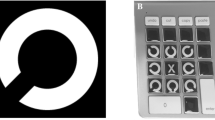Objectives. To study the clinical features and the possibility of obtaining objective assessments of vestibular dysfunction in patients with vestibular migraine. Materials and methods. The study included 46 patients (10 men and 36 women, aged 18 to 50 years) with vestibular migraine and a control group (with simple migraine). Complaints were investigated using a targeted approach, with assessment of vestibular paroxysms, detailed history, investigation of neurological status with an emphasis on oculomotor reactions, and vestibular testing. Objective assessment of vestibular dysfunction was obtained using functional computerized stabilometry. Results. Clinical features and stabilometric parameters in patients with vestibular migraine were determined and used to obtain quantitative assessments of vestibular dysfunction and objective evaluation of dizziness in this category of patients. Conclusions. Targeted and complete collection of complaints and histories, with details of the characteristics of attacks in patients with vestibular migraine, helps to identify the clinical polymorphism of the pathology of interest and contributes to accurate diagnosis. The use of functional stabilometric tests contributes to objective evaluation of vestibular dysfunction in this category of patients, providing quantitative measures of important differences in the balance system in vestibular migraine.
Similar content being viewed by others
References
D. Kaski, “Neurological update: dizziness,” J. Neurol., 267, No. 6, 1864–1869 (2020), https://doi.org/10.1007/s00415-020-09748-w.
M. Groezinger, D. Huppert, R. Strobl, and E. Grill, “Development and validation of a classification algorithm to diagnose and differentiate spontaneous episodic vertigo syndromes: results from the DizzyReg patient registry,” J. Neurol., 267, 160–167 (2020), https://doi.org/10.1007/s00415-020-10061-9.
O. R. Maarsingh and V. A. van Vugt, “ten vestibular tools for primary care,” Front. Neurol., 12, 642137 (2021), https://doi.org/10.3389/fneur.2021.642137.
T. Lempert and M. von Brevern, “Vestibular migraine,” Neurol. Clin., 37, No. 4, 695–706 (2019), https://doi.org/10.1016/j.ncl.2019.06.003.
R. W. Baloh, “Vestibular migraine: Mechanisms, diagnosis, and clinical features,” Semin. Neurol., 40, No. 1, 76–82 (2020), https://doi.org/10.1055/s-0039-3402735.
I. N. Samartsev and S. A. Zhivolupov, Vertigo. The Newest Interpretation in Neurology, MEDpress-Inform, Moscow (2019).
T. C. Huang, S. J. Wang, and A. Kheradmand, “Vestibular migraine: An update on current understanding and future directions,” Cephalalgia, 40, No. 1, 107–121 (2020), https://doi.org/10.1177/0333102419869317.
B. Stolte, D. Holle, S. Naegel, et al., “Vestibular migraine,” Cephalalgia, 35, 262–270 (2015), https://doi.org/10.1177/0333102414535113.
M. Maldonado Fernandez, J. S. Birdi, G. J. Irving, et al., “Pharmacological agents for the prevention of vestibular migraine,” Cochrane Database Syst. Rev., 6, CD010600 (2015), https://doi.org/10.1002/14651858.CD010600.pub2.
W. Liu, H. Dong, L. Yang, et al., “Severity and its contributing factors in patients with vestibular migraine: A cohort study,” Front. Neurol., 11, 595328 (2020), https://doi.org/10.3389/fneur.2020.595328.
Y. Shen, X. Qi, and T. Wan, “The treatment of vestibular migraine: A narrative review,” Ann. Ind. Acad. Neurol., 23, No. 5, 602–607 (2020), https://doi.org/10.4103/aian.AIAN_591_19.
R. Teggi, B. Colombo, R. Albera, et al., “Clinical features, familial history, and migraine precursors in patients with definite vestibular migraine: the VM-phenotypes projects,” Headache, 58, 534–544 (2018), https://doi.org/10.1111/head.13240.
“The International Classification of Headache Disorders, 3rd edition,” Cephalgia, 38, No. 1, 1–211 (2018), https://doi.org/10.1177/0333102417738202.
E. J. Formeister, H. G. Rizk, M. A. Kohn, et al., “The epidemiology of vestibular migraine: A population-based survey study,” Otol. Neurotol., 39, No. 8, 1037–1044 (2018), https://doi.org/10.1097/MAO.0000000000001900.
M. Li, X. Xu, W. Qi, et al., “Vestibular migraine: the chameleon in vestibular disease,” Neurol. Sci., 42, No. 5, 1719–1731 (2021), https://doi.org/10.1007/s10072-021-05133-1.
D. V. Skvortsov, Stabilometric Investigations, Maska, Moscow (2010).
E. M. Illarionova and N. P. Gribova, “Assessment of balance and objective analysis of dizziness in patients with vestibular migraine,” Doktor.Ru, 20, No. 9, 17–20 (2021), https://doi.org/10.31550/1727-2378-2021-20-9-17-20.
L. P. Gorski, A. M. D. Silva, F. S. Cusin, et al., “Body balance at static posturography in vestibular migraine,” Braz. J. Otorhinolaryngol., 85, No. 2, 183–192 (2019), https://doi.org/10.1016/j.bjorl.2017.12.001.
E. M. Illarionova and N. P. Gribova, “Current possibilities of stabilometric diagnosis of migraine-associated vertigo,” Zh. Nevrol. Psikhiatr., 114, No. 10, 87–89 (2014).
J. H. Sohn, “Recent advances in the understanding of vestibular migraine,” Behav. Neurol., 2016, 1801845 (2016), https://doi.org/10.1155/2016/1801845.
N. Ongun, N. S. Atalay, E. Degirmenci, et al., “Tetra-ataxiometric posturography in patients with migrainous vertigo,” Pain Physician, 19, 87–95 (2016), PMID: 26752496.
Author information
Authors and Affiliations
Corresponding author
Additional information
Translated from Zhurnal Nevrologii i Psikhiatrii imeni S. S. Korsakova, Vol. 122, No. 5, Iss. 1, pp. 78–83, May, 2022.
Rights and permissions
Springer Nature or its licensor (e.g. a society or other partner) holds exclusive rights to this article under a publishing agreement with the author(s) or other rightsholder(s); author self-archiving of the accepted manuscript version of this article is solely governed by the terms of such publishing agreement and applicable law.
About this article
Cite this article
Illarionova, E.M., Gribova, N.P. Vestibular Migraine. Neurosci Behav Physi 52, 1379–1384 (2022). https://doi.org/10.1007/s11055-023-01370-3
Received:
Accepted:
Published:
Issue Date:
DOI: https://doi.org/10.1007/s11055-023-01370-3




